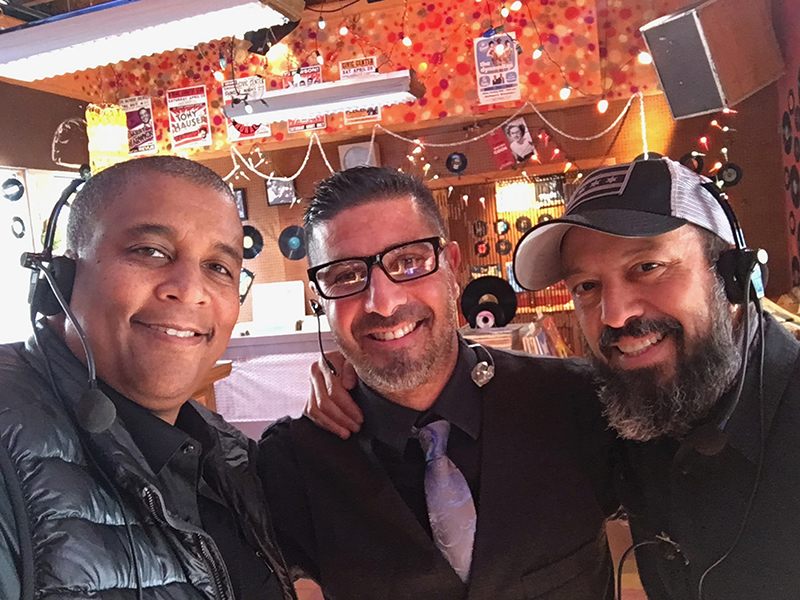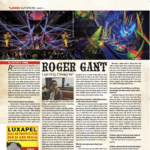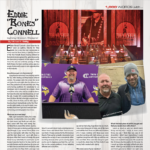Kevin Lawson, better known as KevLaw, is one of the go-to lighting directors/programmers for TV, events and corporate gigs. Based in Michigan, Lawson started off in theater working as an assistant/associate and LD for regional, Off-Broadway and Broadway shows. After a career shift to lighting for broadcast television, Lawson has spent the last 18 years serving as a lighting designer, director and/or programmer on more than 200 televised productions. Lawson garnered industry honors for the Election Night Rally in 2008 and NBC’s Hairspray Live! He was nominated for Emmy Awards for the 2013 Rock and Roll Hall of Fame Induction Ceremony, The Wiz Live! and Hairspray Live! His lengthy list of credits include two Super Bowl Halftime Shows, seven Miss Americas, 13 Comedy Central Roasts and 17 Rock and Roll Hall of Fame Induction Ceremonies.
PLSN: How did you get into the industry?
Kevin Lawson: I went to The Theatre School at DePaul University [in Chicago], originally to be a stage manager. After doing a lighting call my freshman year, I decided I’d rather be a lighting designer and shifted majors. After I graduated in ‘91, I went to DC as an Allen Lee Hughes Fellow at Arena Stage [in Southwest DC]. That was a cool opportunity, and it led me to a gig at Lincoln Center, with lighting designer Beverly Emmons. I stayed in New York and assisted Beverly and others; I even got to do a show with Thomas Skelton, which was awesome. I designed a couple of Off-Off-Broadway and Off-Broadway shows and just worked my way up to assisting on Broadway.
When did you cross over into TV lighting?
I was working on the Broadway revival of Annie Get Your Gun, for Beverly Emmons, and I had a couple weeks off. Allen Branton was coming to town to consult on the lighting for Sandra Bernhard’s one-woman Broadway show, I’m Still Here…Damn It! Marty Callner, the TV director, was directing, and he often worked with Allen. Allen hadn’t really done a lot of theater, so Lee Magadini, who was the general manager at Vari-Lite NY, got us together. So, it was sort of serendipitous timing.
Allen found he liked having as assistant, because he really hadn’t had one for his television work before that. So, I finished what would be my last Broadway show and shifted over into his world, doing plots and paperwork, taking notes, and that kind of stuff.
How did you move into programming?
Allen designed Bette Midler’s “[Divine Miss] Millennium” tour, so I went out on tour for a couple of months on that, and when I came back, I was just going from TV show to TV show as a paper pusher/assistant. Then Allen needed a conventional operator on a show. I had programmed on Light Palette and Expression consoles, so that was when I moved into programming conventionals on his TV gigs. We were doing a lot more automated key lights and backlights, and it hit the high-water mark of automated units on my “conventional” console on the VMAs — probably around 2003 or 2004 — at Radio City. I had something like 40 VL1000s, 60 VL5s and a bunch of VL2500s all running off an Obsession, and I was ready to shove a pencil through my neck. I knew then that I had to rent a moving light desk going forward. I shifted over to the Wholehog II for a little bit, and then transitioned over to the grandMA. My intention was never actually to be a programmer; it just developed that way. I still design whenever I can; these days I design more than I used to.
You are also a partner and designer/programmer with UVLD, correct?
Yes, I had been freelancing for Greg Cohen and the UVLD guys for a couple of years. I enjoy the camaraderie of working with them, and last summer they invited me to join up with them. It’s a good fit; I get some structure, but I can still work for whoever I want to. It has opened a new door to different work for me; I’ve been doing more corporate projects with the UVLD folks.
What is the essential element needed in the programmer/lighting designer relationship?
Trust. That’s a big thing and, obviously, if you’re working for somebody new, it takes a little bit of time to develop that trust. And in lieu of immediate trust, at least respect. As a programmer, I have to trust and respect that the designer knows what they want. And the designer has to respect and trust the fact that I know how to get them there.
Designers all work a little differently, so you learn how they work, you learn to adjust, and the longer you spend with them, the more creative freedom they give you, because they, hopefully, respect your eye and your opinion. But you always have to remember, as a programmer, that it’s their name at the top of the bill. Programming is not designing. If you know that as a programmer, then you can build a good creative relationship with the designer.

What do you consider one or two milestones in your career?
Well, certainly shifting over to television, with Allen Branton, that was huge, and obviously it has shaped my career. As far as project moments, a highlight is the Grant Park election night for President Obama. I still, when I allow myself to think about it, can tear up pretty easily. Just the energy of that night, and being able to be there in that moment of history. That was so important to me, on various levels. It was huge; it was a love fest. I’ve never experienced that level of camaraderie at a gig, anywhere. Robert Petersen was the designer. You know, all you think of during the night is, “Don’t f*ck this up. Please don’t have his key light burn out.” It was beautiful. That was just an amazing experience.
Is there a piece of advice you got at the start of your career, that you still find applicable today?
“As much as you can, always be nice to everybody.” Because you just really never know. The PA you’re pissed off at because they want to see your credentials one day is going to be the producer four years later, who won’t hire you because you were a d*ck. That advice works on the professional level, but it’s also just a good way to live life. I hope people who work with me say, “He was a good guy to work with, and I would certainly like to have him back.” I think that’s the best thing that anybody could say; that they enjoy working with you.
And what’s surprised you most about your career path?
Everything! Like I said, I never had any intention of going into television. When I was interning for Beverly [Emmons], in ‘92, we had lunch with Alan Adelman, who I had never heard of; I knew nothing about TV lighting. We all went to lunch, and he was the first TV LD I had ever met. Flash forward, 20 years, and I’m programming shows for Alan Adelman. It was a strange journey from DePaul to now. I wouldn’t have imagined it, and I couldn’t be happier with where I ended up and where I am.


